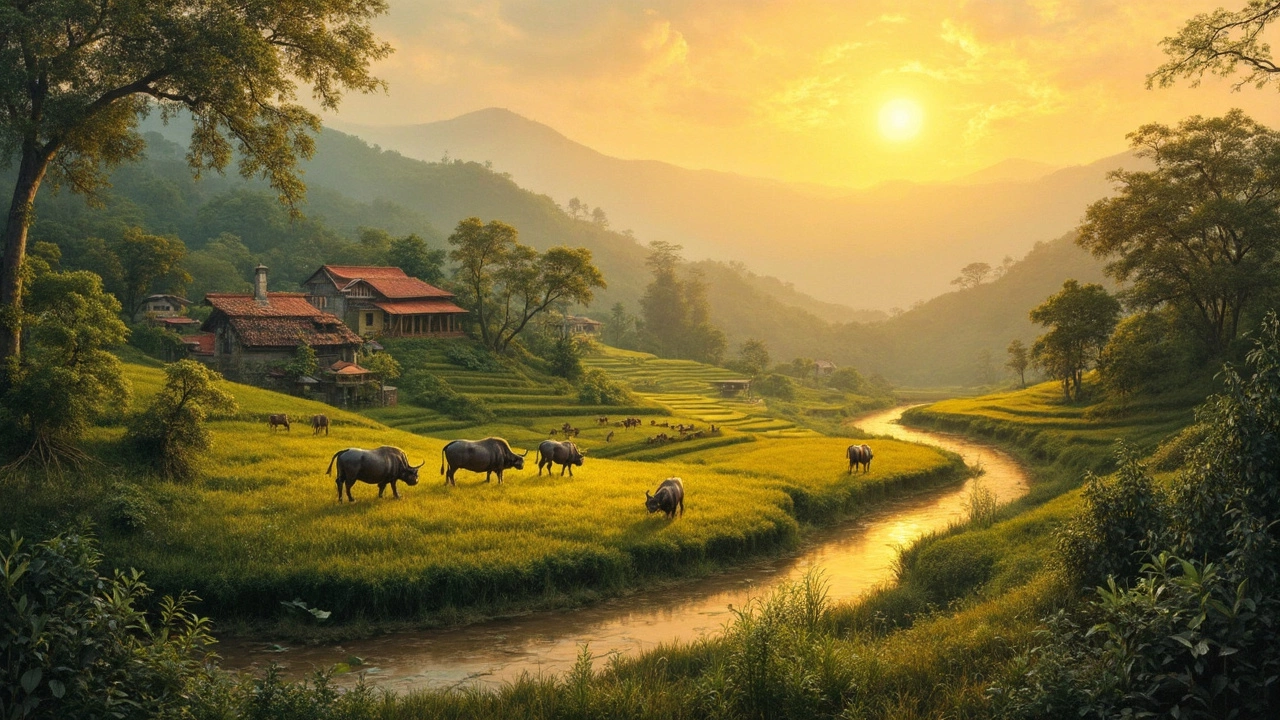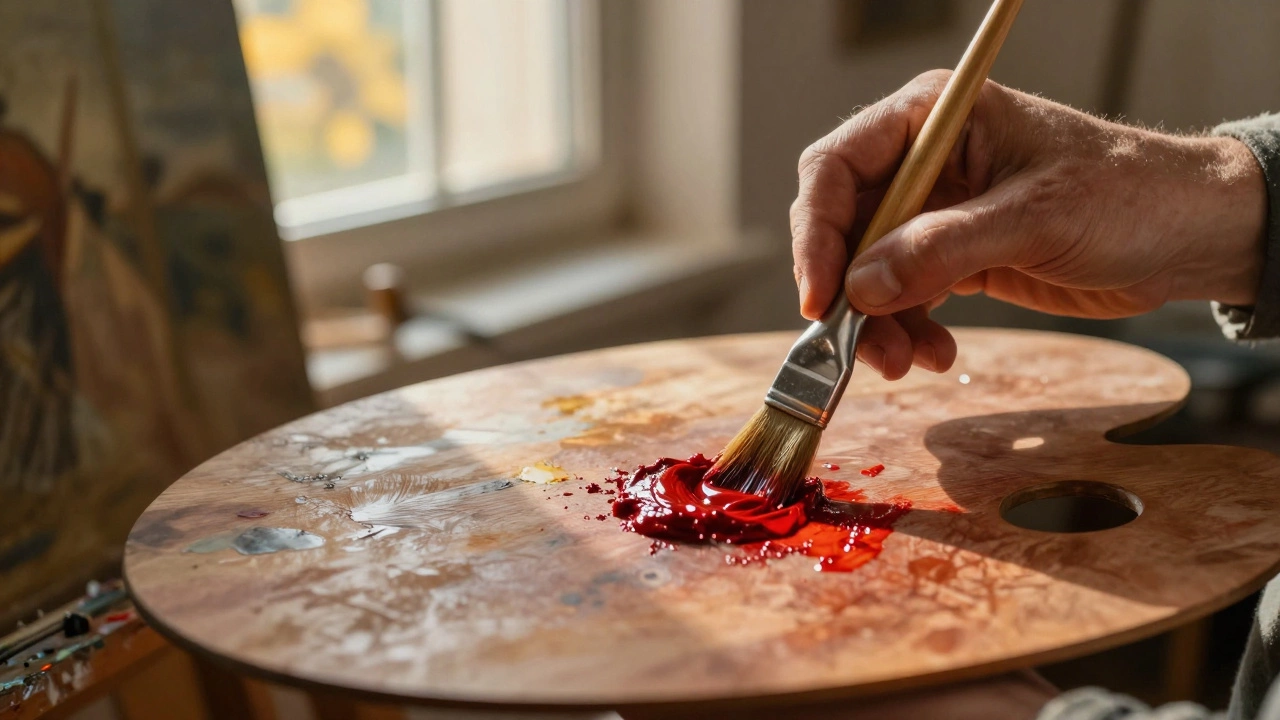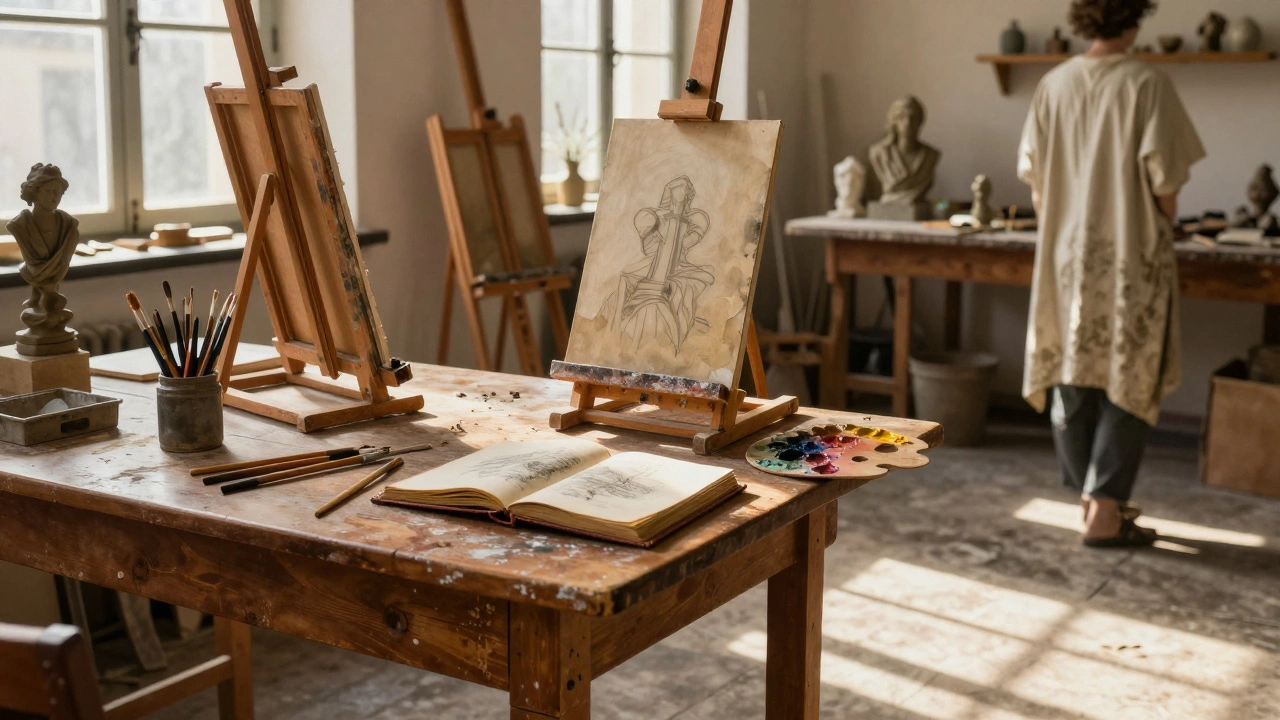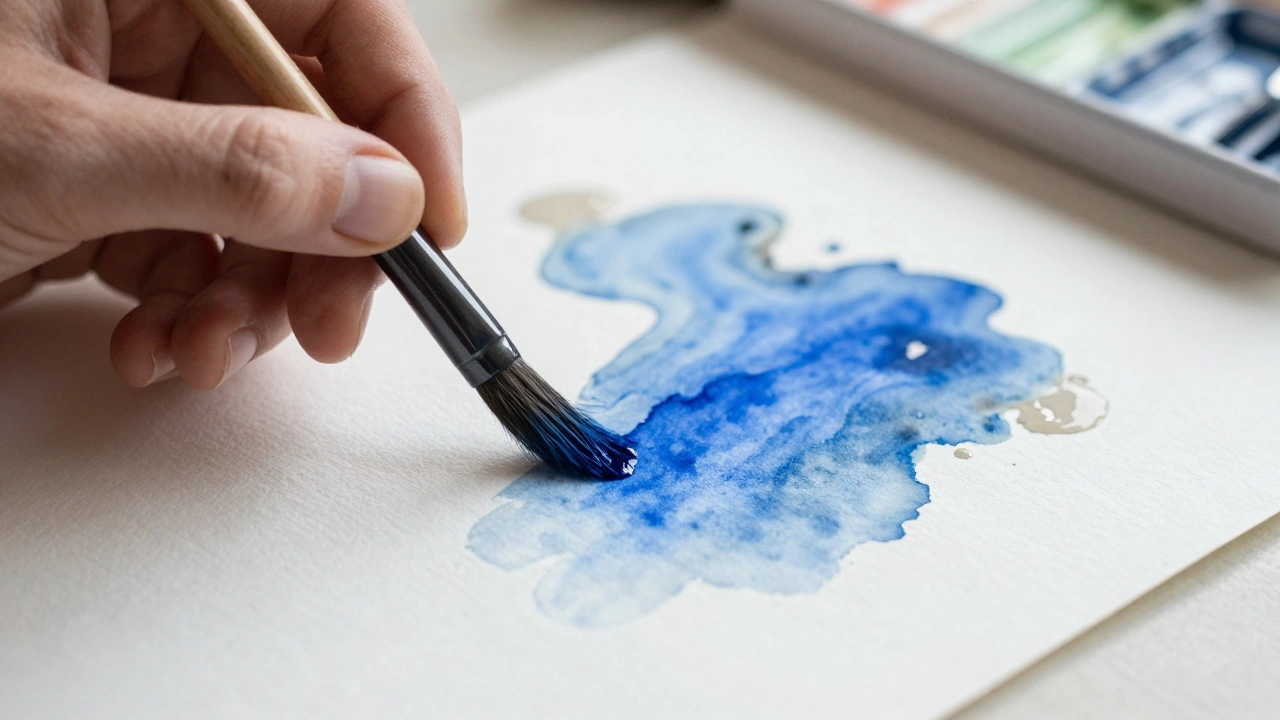If you've ever been lost in the beauty of a painting depicting the natural world, you've likely encountered the magic of landscape art. But did you know there are three main types of landscape art that capture our environment in different ways? While each type has its own charm, diving into their details can be quite an adventure.
First up, representational landscapes are all about depicting the world as it is. Think of this style as a window into reality, where artists aim to capture nature with as much detail and accuracy as possible. Ever seen a painting where you can almost feel the breeze or hear the rustling leaves? That's the magic of representational art.
- Representational Landscapes
- Impressionist Landscapes
- Abstract Landscapes
- Tips for Aspiring Landscape Artists
Representational Landscapes
Representational landscapes are like a snapshot of nature, painted to feel as real as a photograph, but with a touch of the artist's soul. This style aims to closely replicate what our eyes see, capturing every detail from the glistening of a lake to the texture of an old tree bark. It's about translating the complexity of the natural world onto canvas.
One famous example is John Constable's "The Hay Wain," where you can almost feel the texture of the hay and the freshness of the country air. Constable, like many artists in this style, had a knack for making viewers feel present in the scene. Landscape art in this form focuses on composition, light, and shadow to create depth and perspective.
Many aspiring artists start with representational landscapes because it teaches the fundamentals of observing and depicting details. Here are some tips if you want to try:
- Observation skills: Spend time in nature. Notice the details like how light reflects on surfaces or the different shades of color in leaves.
- Practice sketching: Before diving into painting, sketch the scene. Look for the main elements and how they relate to each other.
- Use reference photos: Take photos while exploring. They can be handy for getting details right.
- Play with light: Experiment by painting the same scene at different times of the day or year for various effects.
Representational landscapes hold a rich history and continue to inspire many. As you explore this style, remember it's about more than just mimicry; it’s about capturing the emotion and atmosphere of a place.
| Famous Artist | Notable Work |
|---|---|
| John Constable | The Hay Wain |
| J.M.W. Turner | The Fighting Temeraire |
Impressionist Landscapes
So, what exactly are impressionist landscapes? These works of art aim to capture a moment in time—like a snapshot of the natural world but with a twist. It's not about detailed realism. Instead, it's about conveying the feeling or 'impression' of a scene using light, color, and brushstroke techniques.
The roots of this style stretch back to the late 19th century, with artists like Claude Monet pioneering the movement. Monet's series of water lilies is a stellar example, where the focus is on the play of light on the flowers and water, rather than precise botanical details. These works often evoke emotion and instill a sense of tranquility in the viewer.
Impressionist landscapes stand out because of their unique techniques. Artists typically use short, thick strokes of paint to quickly capture the essence of a scene, often en plein air (that's French for painting outdoors!). This method allows them to work swiftly, catching fleeting effects of light and weather conditions that change within minutes.
Curious how impressionist landscapes manage to be so relatable yet evocative? It's all about the colors. Artists often use colors straight from the tube, mixing them more on the canvas than on the palette. Complementary colors are placed next to each other to enhance vibrancy and convey a sense of movement. Imagine seeing the vibrant hues of a sunset captured in such a dynamic way; it feels alive!
If you're an aspiring artist looking to dip your toes into impressionist techniques, start by experimenting with outdoor painting. Pay attention to how the light shifts and the colors play off each other at different times of the day. Remember, it’s about the mood and capturing that ephemeral moment, not about every single tiny detail.
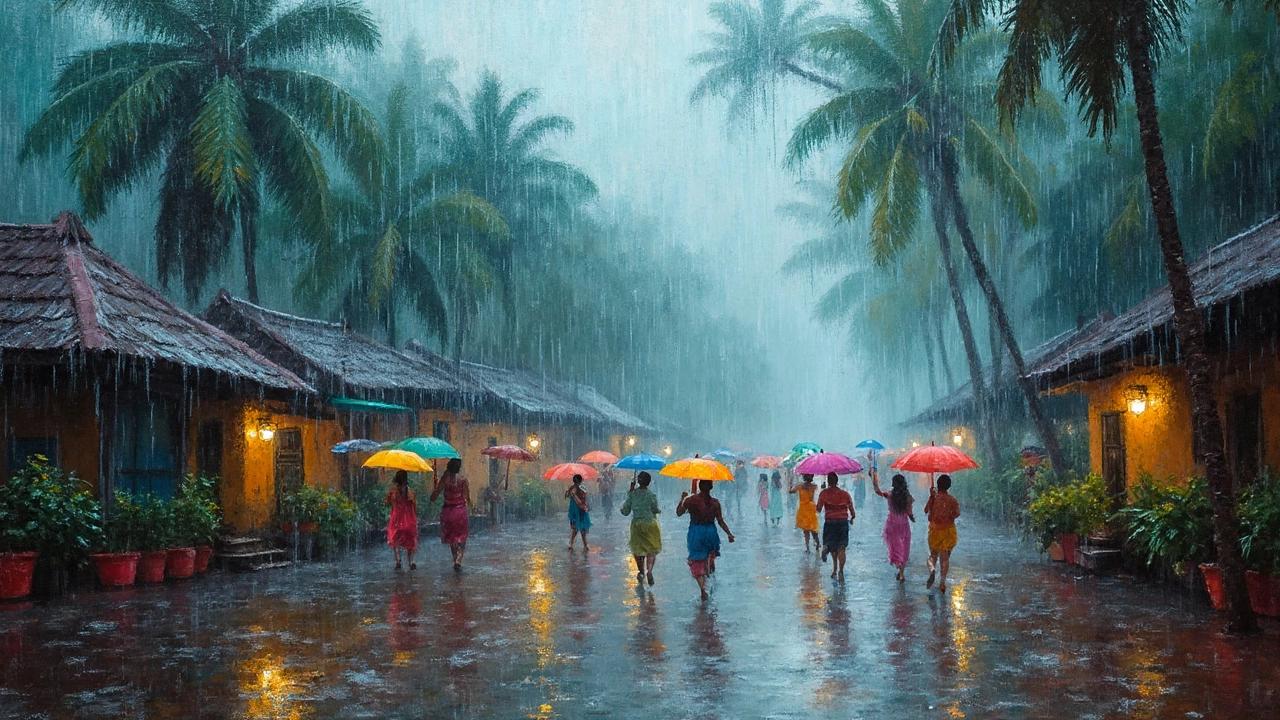
Abstract Landscapes
Abstract landscape art might seem a bit mysterious at first, but it's all about freedom and creativity. Unlike representational or impressionist styles, abstract landscapes aren't bound by the rules of reality. Artists use shapes, colors, and forms to evoke the feeling or essence of a place rather than its literal appearance.
Picture this: a painting where the sky isn't blue, and the trees are nothing but swirling patterns of color. That's the core idea here. It's like capturing the soul or emotion of a landscape rather than the scene itself. Artists like Wassily Kandinsky and Georgia O'Keeffe have delved into these dreamy realms, offering viewers a fresh way to look at nature.
What's exciting about abstract landscapes is their ability to stir emotions and thoughts differently for each viewer. A single piece might invoke tranquility in one person and a sense of adventure in another. This style invites you to interpret what you see, making it a personal experience.
For anyone dabbling in painting, abstract landscapes can be a great playground to explore. There are no hard-and-fast rules here. Start by experimenting with colors that express how a certain location makes you feel. Try using bold brushstrokes or unexpected color combinations to convey movement and mood.
Another tidbit? Abstract art fans love to analyze and discuss interpretations, so each piece often becomes a conversation starter. Whether you love art collecting or are just curious, exploring abstract landscape paintings can deepen your appreciation for nature’s infinite possibilities.
Tips for Aspiring Landscape Artists
Dipping your toes into landscape art can be both exciting and overwhelming. But don't worry, here are some practical tips to help you on your journey. First off, it's really important to get inspired by observing your surroundings. Whether it's a park in the city or a secluded beach, take some time to notice the details – the light, the shadows, how the trees sway in the wind.
When starting out, it helps to study different painting types. Grab a few art books or watch online tutorials to see how artists approach representational, impressionist, and abstract landscapes. This can spark some ideas about what style suits you best.
Practice makes perfect, so try to paint or sketch regularly. Here’s a simple plan:
- Sketch Daily: Even just 10 minutes a day can make a difference. You'll become more comfortable with your tools and start understanding form and structure better.
- Experiment with Mediums: Watercolors can capture the fluidity of a river, while oils might be great for that vibrant sunset. Don't be afraid to mix it up!
- Capture Photos: Keep a camera or phone handy. Snap interesting scenes, then use these images as references later.
One handy hack is to create a 'color journal.' It's basically a collection of color swatches you've mixed yourself. When working on a landscape, you’ll have a ready reference to match the hues of nature more precisely.
| Art Style | Key Characteristics |
|---|---|
| Representational | Realistic and detailed |
| Impressionist | Focuses on light and movement |
| Abstract | Emphasizes shapes and forms |
Finally, always remember to have patience. Art is a journey, and sometimes the piece that started off looking like a mess turns out to be something truly special. Keep experimenting and learning from each experience!
